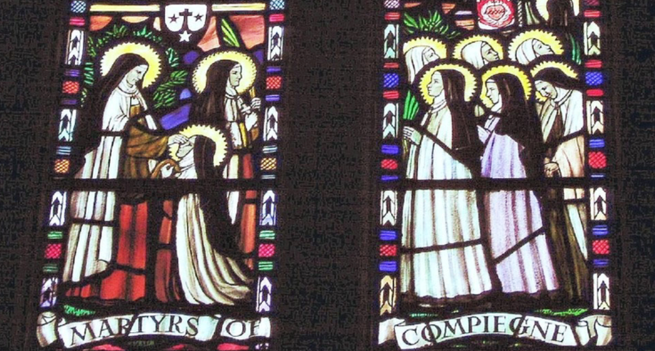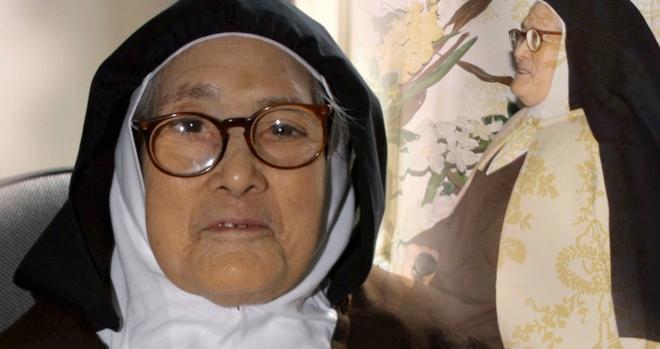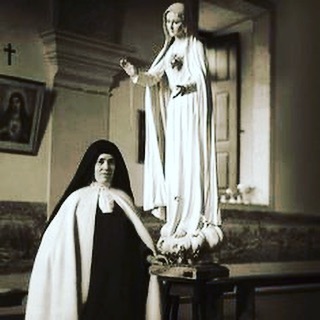The Martyrs of Compiègne: Our Newest Saints
Witnesses of Courage and Faith
In a decision rich in historical and spiritual significance, Pope Francis has formally inscribed the Carmelite Martyrs of Compiègne into the catalog of Saints, extending their veneration to the universal Church.
This equipollent canonization, announced on December 18, 2024, during an audience with Cardinal Marcello Semeraro, Prefect of the Dicastery for the Causes of Saints, honors the witness of these sixteen Discalced Carmelite nuns, who laid down their lives in fidelity to their faith during the French Revolution.
Screenshot of the Notice of Equipollent Canonization, December 18, 2024Holy See Press Office, Daily Bulletin“During the audience granted to His Eminence Cardinal Marcello Semeraro, prefect of the Dicastery for the Causes of Saints, the Supreme Pontiff approved the votes in favour of the Ordinary Session of Cardinals and Bishops, Members of the Dicastery, and decided to extend to the universal Church the cult of Blessed Teresa [of St. Augustine (née Marie Madeleine-Claudine Lidoine)] and fifteen companions of the Order of Discalced Carmelites of Compiègne, martyrs, killed in odium fidei on 17 July 1794 in Paris, France, inscribing them in the Book of Saints (equipollent canonization).”
A Testament of Martyrdom in Odium Fidei
The martyrs, led by Mother Teresa of St. Augustine (born Marie Madeleine Claudine Lidoine), were executed on July 17, 1794, in Paris. Their crime? “Fanaticism,” a charge rooted in their unwavering devotion to the Sacred Hearts of Jesus and Mary. Stripped of their religious habits and forcibly separated, the sisters continued their life of prayer and sacrifice in secrecy. Arrested in June 1794, they were detained in the Conciergerie, where their steadfast faith shone as a beacon of hope to fellow prisoners. The day after celebrating the Feast of Our Lady of Mount Carmel, they were taken to the guillotine, singing Veni Creator Spiritus and renewing their vows as they ascended the scaffold.
Stained glass window commemorating
The Martyrs of Compiègne
Quidenham Carmel, England
Designed by Sr. Margaret Agnes Rope, OCDImage credit: John Salmon / Wikimedia Commons (Some rights reserved) The Historical Context
The Carmel of Compiègne was established in 1641 by eight Carmelite nuns from the monasteries of Amiens and Paris, themselves founded by Spanish Carmelites, daughters of St. Teresa of Avila, who arrived in France in 1604. After initially settling in a house known as the “Toison d’Or,” the community moved several times before permanently establishing themselves near the Porte Chapelle in 1648. Dedicated to the mystery of the Annunciation, the monastery received notable support from Anne of Austria, Louis XIV, and later members of the French court, including Madame Louise, daughter of Louis XV, who entered the Carmel of Saint-Denis in 1770 and maintained close ties with the Compiègne community. Amid the turbulence of the Revolution, the nuns’ collective decision to offer their lives for peace and reconciliation exemplifies a spirit of fidelity and prayer. Their sacrifice would later inspire many, including Gertrud von Le Fort, the great Catholic playwright Georges Bernanos, and composer Francis Poulenc, whose opera Dialogues of the Carmelites immortalized their story.
In words that echo their unwavering courage, Mother Teresa of St. Augustine addressed her sisters months before their martyrdom:
“It seems to me that since we entered the holy state of religious life only to carry out the work of our sanctification, this immolation of ourselves should be less costly to us. Sisters, I don’t know what fate awaits us; but though I hope God will give us grace to make the sacrifice of our lives to Him, I don’t pretend to make it an obligation for any of you to recite this act, and don’t think I’m in the least bit edified or pained to see you refuse to do so.”
Saint Teresa of St. Augustine
September or October 1792
The Canonization Process
This equipollent canonization highlights the Church’s recognition of the nuns’ sanctity and heroic virtue without the need for a formal miracle. Beatified by Pope St. Pius X on May 27, 1906, the cult of these martyrs has since grown, demonstrating that they are models of courage, fidelity, and prayer amidst persecution.
The procedure, initiated by Benedict XIV, allows the Holy Father to extend the liturgical cult of a servant of God when their widespread veneration and exemplary holiness are clearly established. In this case, Pope Francis’s decree ensures that the martyrs’ sacrifice will inspire generations of the faithful to come.
A Legacy of Hope and Peace
The Carmelites of Compiègne exemplify the Gospel teaching: “Greater love has no one than this, to lay down one’s life for one’s friends” (Jn 15:13). Their self-offering, made for the reconciliation of a fractured Church and State, resonates deeply in a world still yearning for unity and peace.
Today, their story invites us to reflect on the cost of discipleship and the power of prayer in the face of adversity. Their remains rest in a common grave at the Picpus Cemetery in Paris, a place of pilgrimage and remembrance, where their martyrdom is commemorated with a simple epitaph.
This simple plaque in Picpus Cemetery, Paris, commemorates the MartyrsImage credit: Mu / Wikimedia Commons (Some rights reserved) The Martyrs of Compiègne
As we honor these newly proclaimed saints, let us ask their intercession for courage and perseverance in our own lives. May their example inspire us to remain faithful to God’s call, no matter the challenges we face.
Here are the names of each of the sixteen martyrs, arranged according to their age:
- Saint Marie of Jesus Crucified Piedcourt, age 78, choir nun
- Saint Charlotte of the Resurrection Thouret, age 78, choir nun
- Saint Euphrasia of the Immaculate Conception Brard, age 58, choir nun
- Saint Julie Louise of Jesus Crétien de Neuville, age 52, choir nun
- Saint Teresa of the Heart of Mary Hanisset, age 52, choir nun
- Saint Martha Dufour, age 52, lay sister
- Saint Catherine Soiron, age 52, extern
- Saint Marie of the Holy Spirit Roussel, age 51, lay sister
- Saint Teresa of St. Ignatius Trézel, age 51, choir nun
- Saint Henriette of Jesus de Croissy, age 49, choir nun, the novice mistress and former prioress
- Saint Teresa Soiron, age 46, extern (blood sister of Catherine Soiron)
- Saint Louis Brideau, age 42, choir nun, the subprioress
- Saint Teresa of Saint Augustine Lidoine, age 41, choir nun, the prioress
- Saint Marie Henriette of Divine Providence Pelras, age 34, choir nun
- Saint Francis Xavier Verolot, age 30, lay sister
- Saint Constance of Jesus Meunier, age 29, novice choir nun, proto-martyr of Discalced Carmelite nuns
To learn more about the heroic witness of the Martyrs of Compiègne, listen to the podcast episode embedded below, where we delve deeper into their story and the significance of equipollent canonization.
https://www.youtube.com/watch?v=P_tf0wSrirw
Morgain, S 2023, Les Carmélites Martyres De Compiègne : Pour La Paix De L’église Et De L’état, Nouvelle édition revue et augmentée, Éditions du Carmel, Toulouse.
Featured image: This detail from a stained glass window depicting the Carmelite Martyrs of Compiègne was designed by stained glass artist Sister Margaret of the Mother of God, O.C.D. (Margaret Rope). It is one of her most famous windows in the chapel of the Carmel of Quidenham, England. Image credit: Discalced Carmelites
#canonization #Compiègne #decree #DiscalcedCarmelite #equipollentCanonization #FrenchRevolution #martyr #nuns #Podcast #sacrifice #StTeresaOfStAugustine








